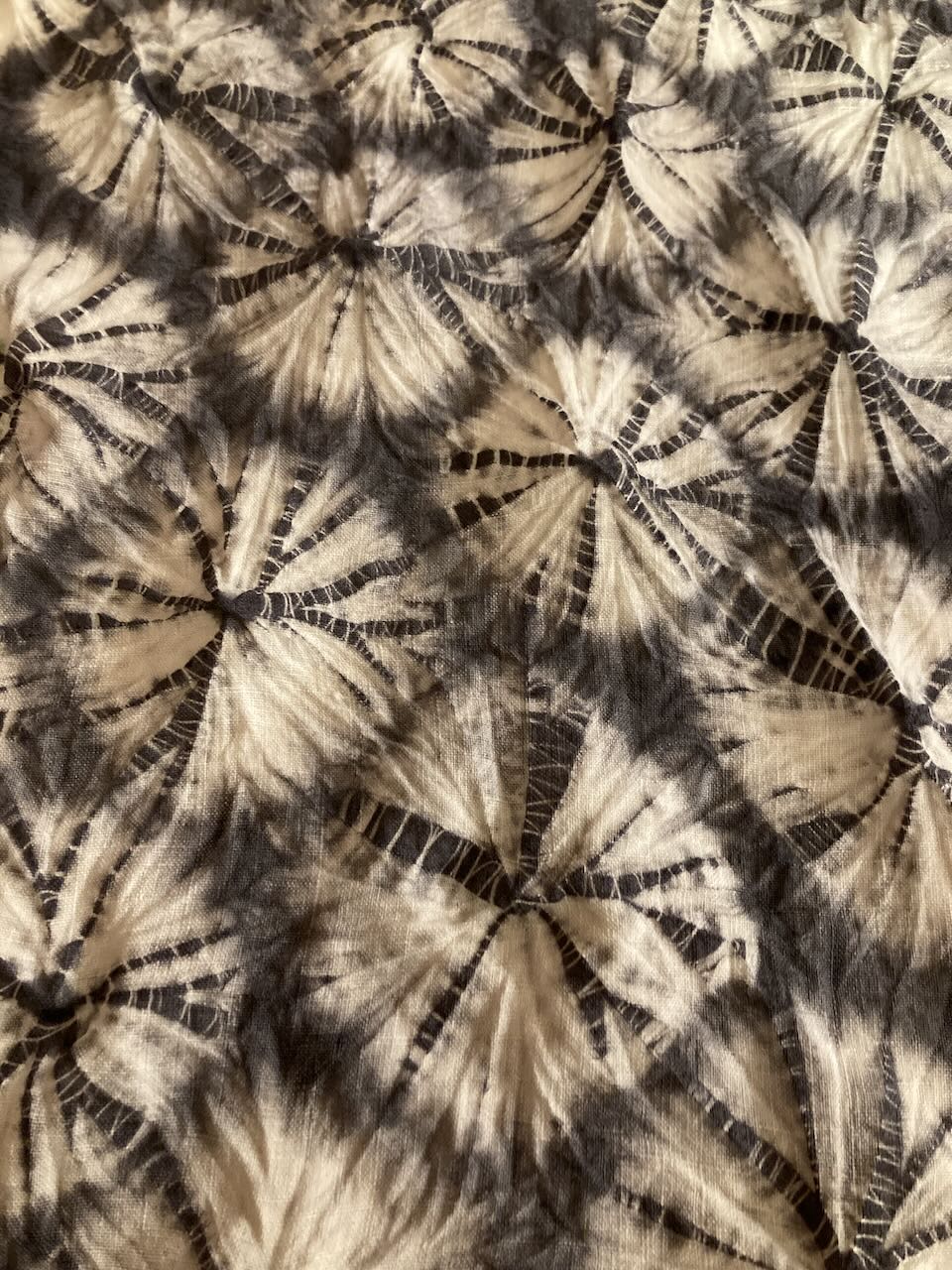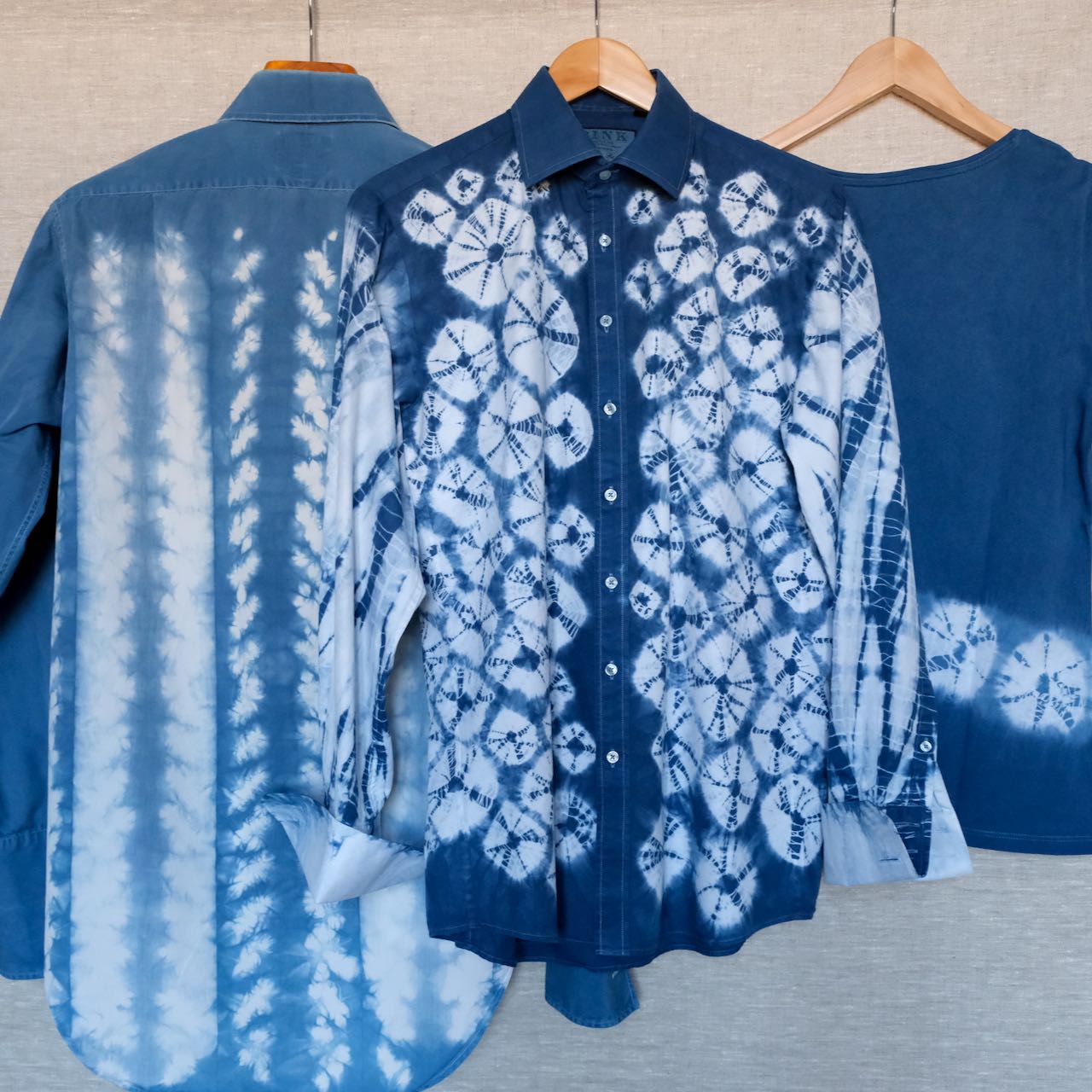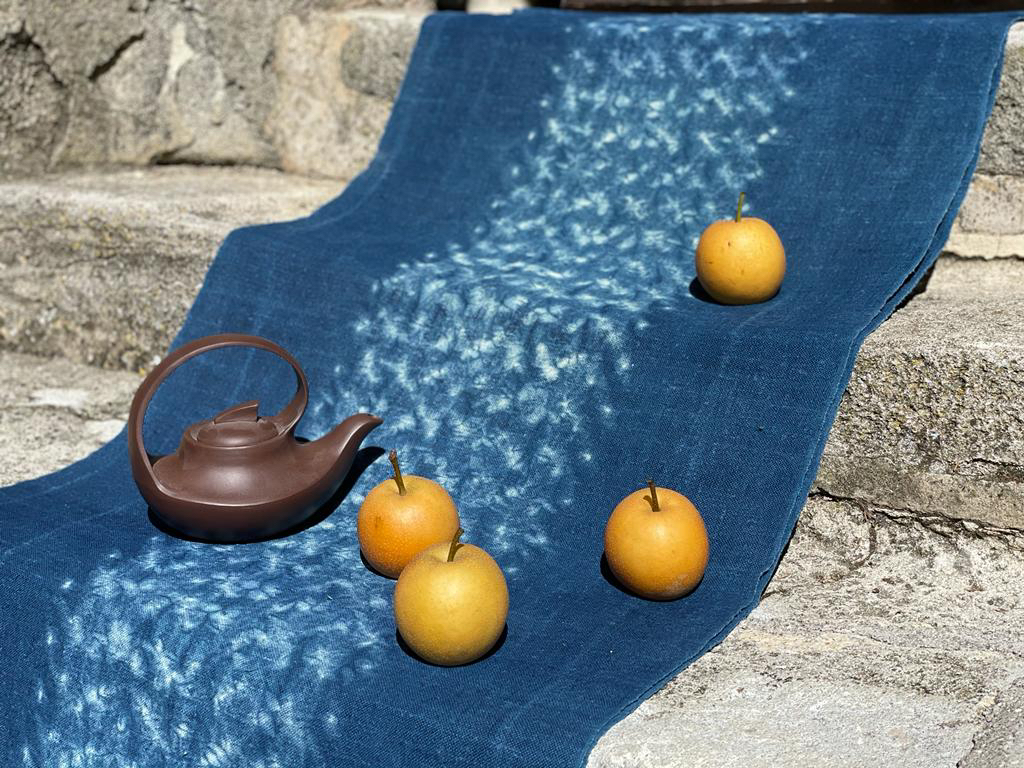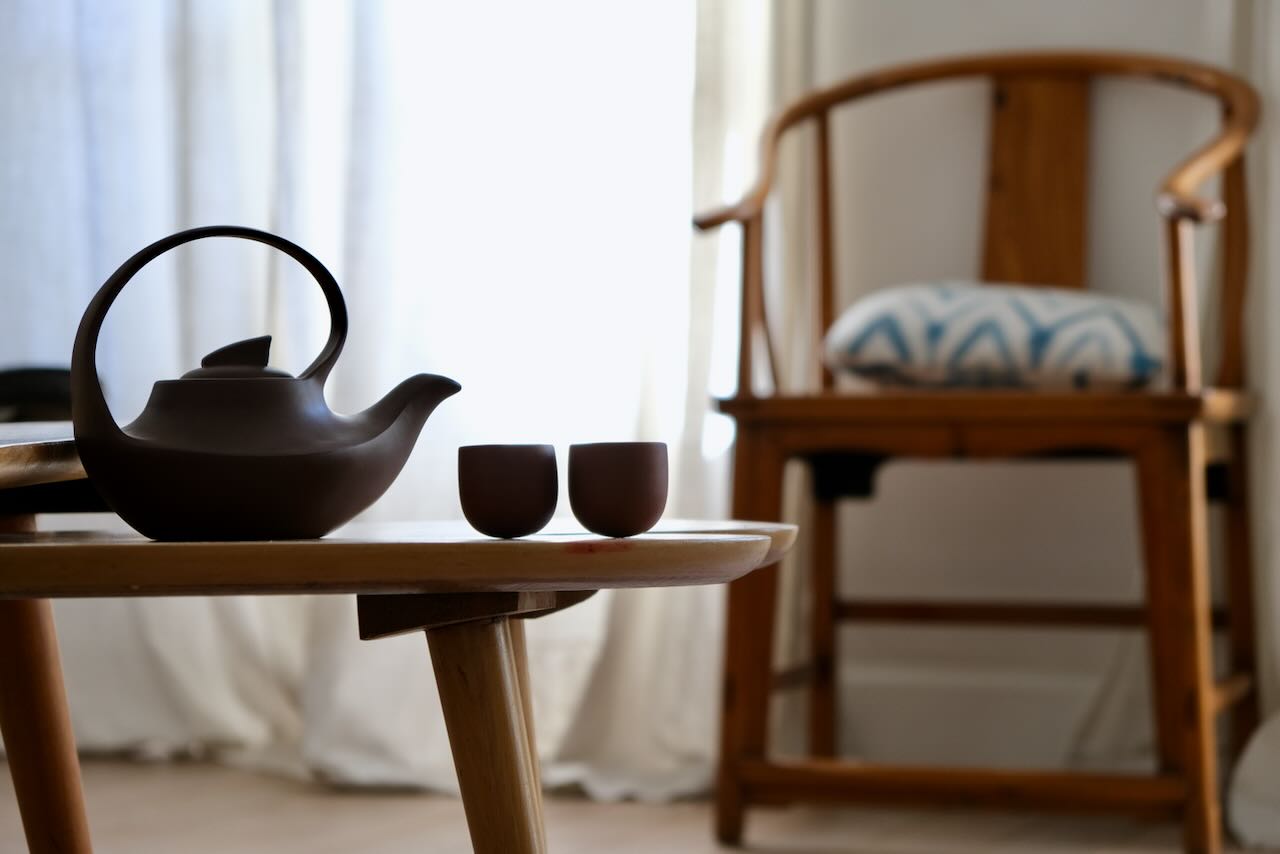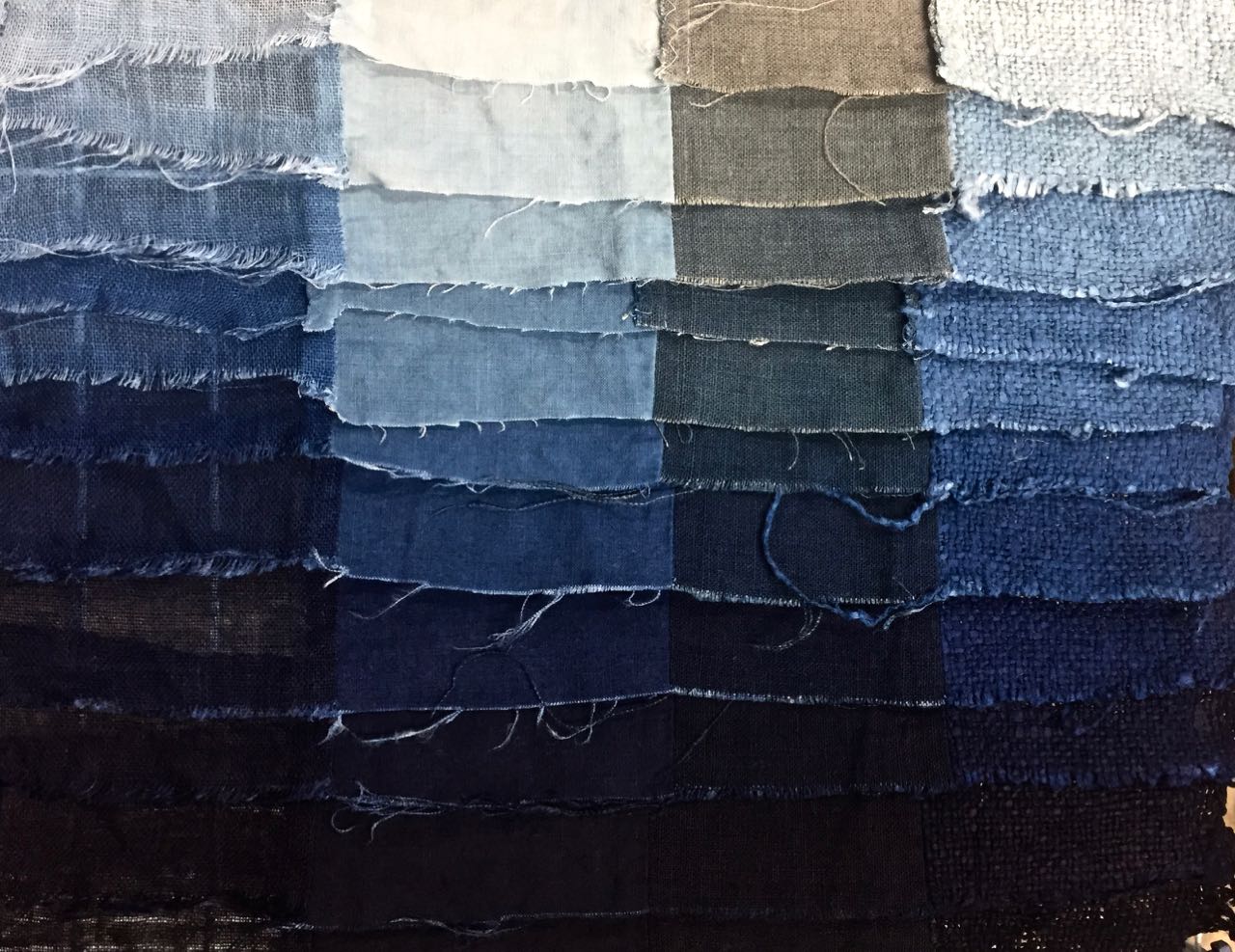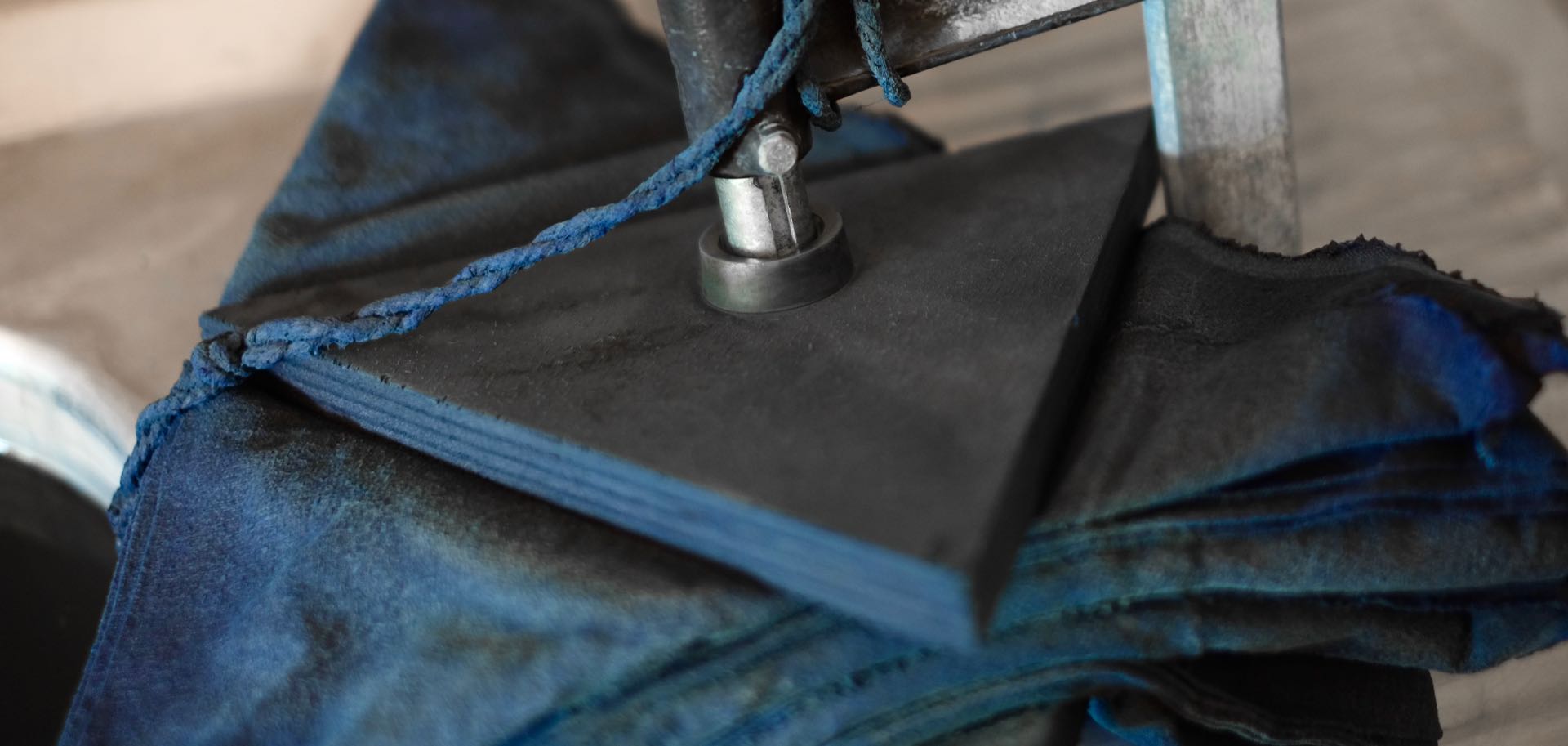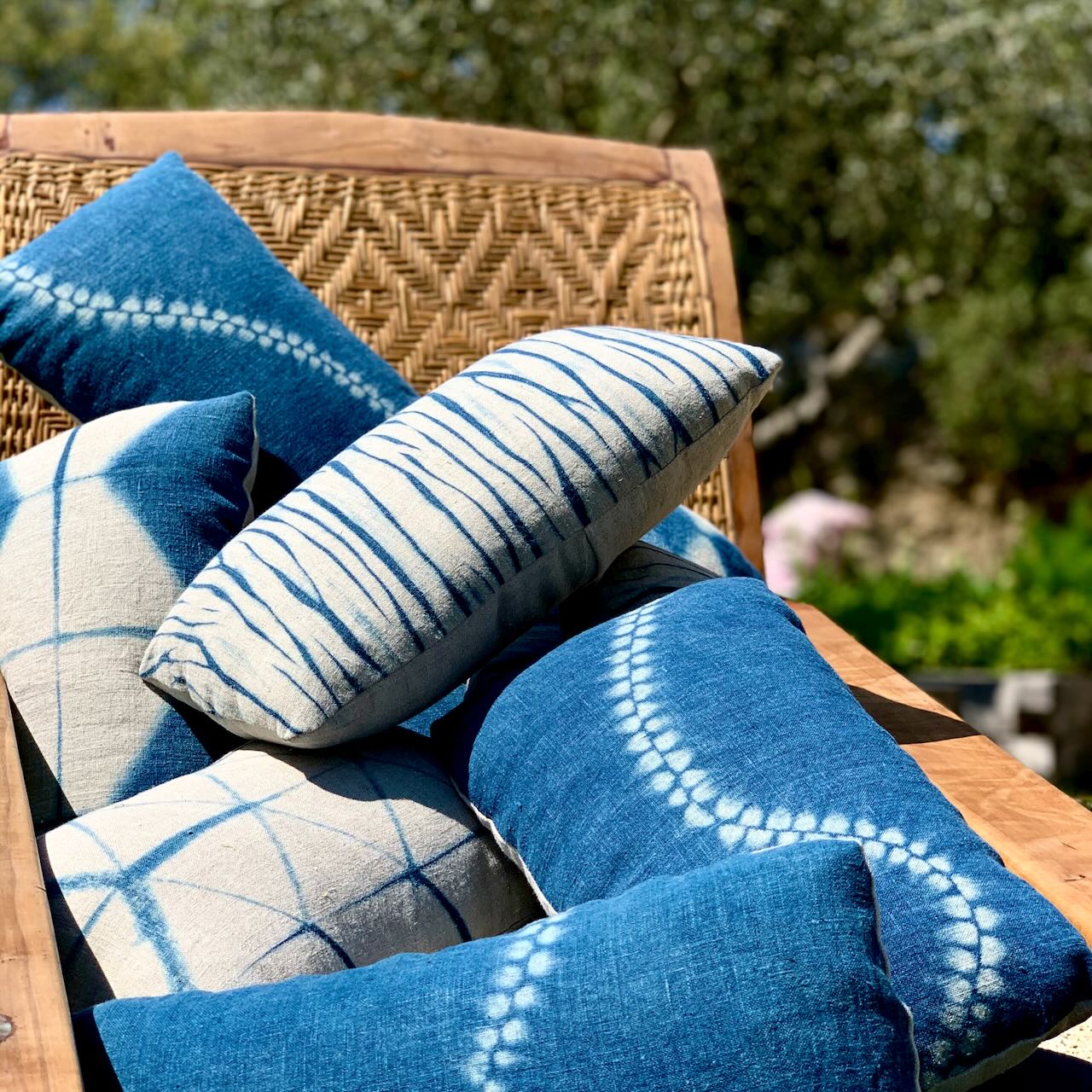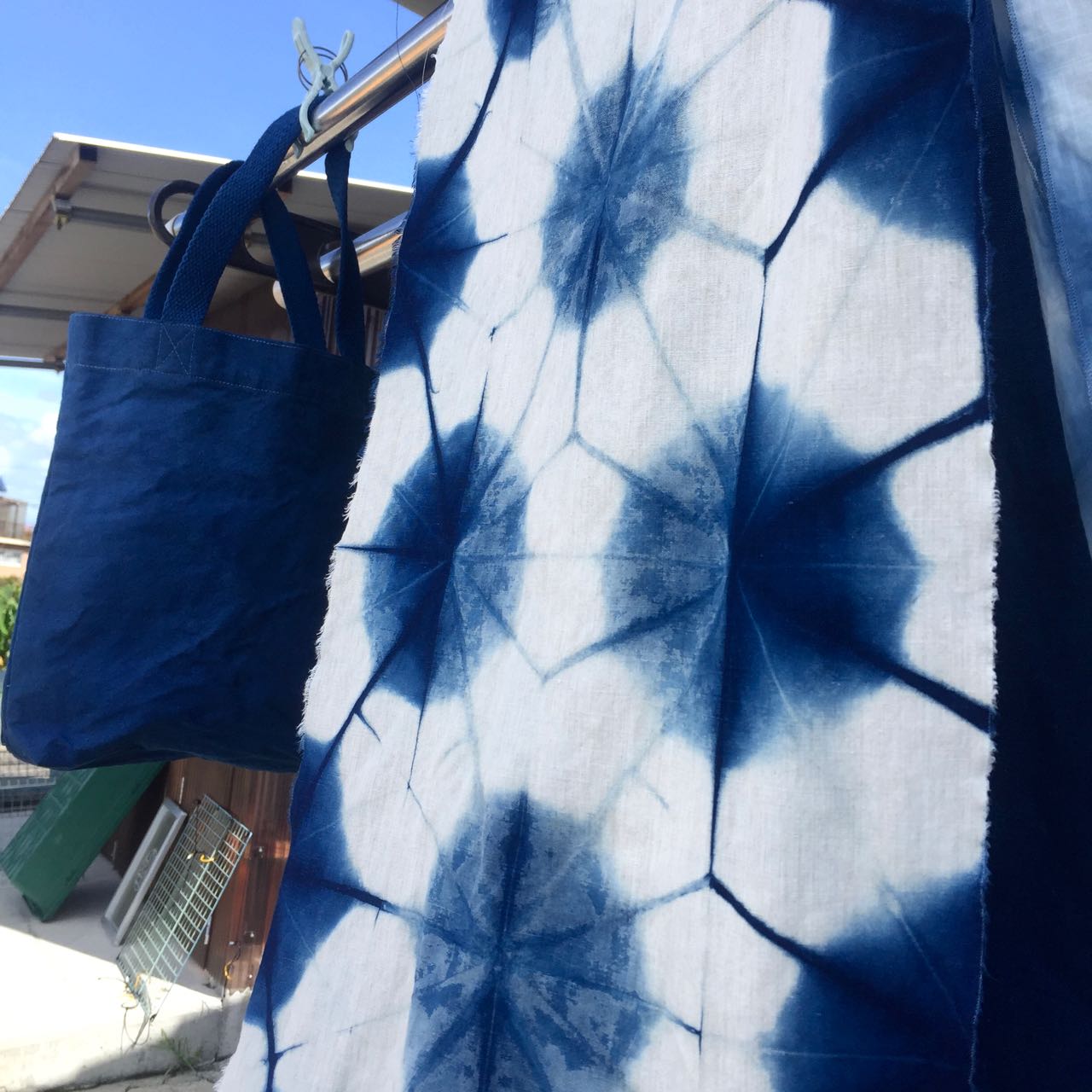Tegumo shibori is a type of tied resist developed in Arimatsu, Japan, where I had the chance of training with master Kuno-san from Kuno Studio (see blogpost in process here) During the Edo period, the busy Tokaido route saw the flourishing of trade. Arimatsu's...
Indigo vat
Upcycling
It all started as a whim, a wish to cover up a stain on an old favourite linen skirt... and it ended up being a great idea! Soon, one of my clients was asking me to upcycle her lovely white linen dress. Upcycling beloved items of clothing to cover up stains, or...
More shiboris
A fun shooting on the stone stairs of our place in Vaison-la-Romaine, in the heart of the medieval town, where I open the showroom upon appointment. All photos are linked to their respective product or category By the pool at La Baye des Anges where I dye the linen...
Bye Marseille
After over a decade of living in Marseille, we left a piece of our hearts there when moving out. All photos are linked to their respective product or category
Indigo dyeing
In the world of natural dyes, indigo has a place on it's own. Unlike other dyes, it does not need mordanting and can be applied to the fabric straight after scouring. However, it is still very labour intensive, and patience is still of essence here. The dye is applied...
Itajime shibori
Itajime shibori is another reserve technique used to create patterns. This time the fabric is folded and pressed between two pieces of wood. The folds, along with press placement, lead to a variety of patterns. I am always in awe with the magic of those geometric...
Back from Tokushima
In Septembre 2019, along with a group of fellow natural dyers conducted by Leaf organisation (now Tinctoria), we had the incredible chance to attend a 10 day class at Buaisou where along with putting together a Sukumo based indigo vat, we also practised several...
Buaisou: advanced indigo dying and reserve techniques course
A 10 day training organised by @leafluberon in Tokushima, Japan, at the @Buaisou-i workshop. An eagerly anticipated trip which went way ahead of my expectations. Filled with people passionate about indigo, natural dying practices, sustainability, life and slow...

